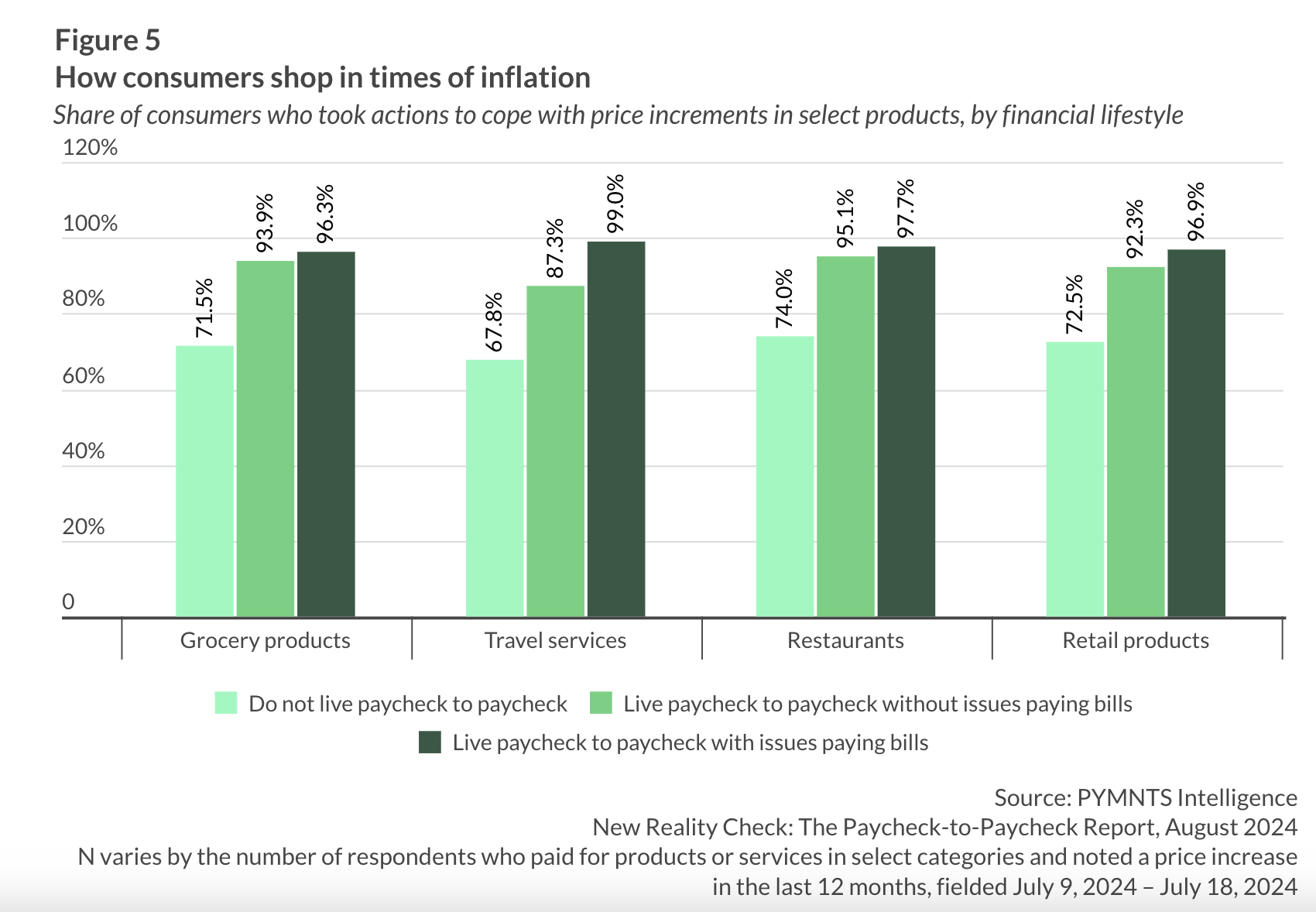
As consumers bear the burden of inflation, PYMNTS Intelligence reveals that nearly all individuals living paycheck to paycheck are making trade-offs when it comes to restaurant spending.
The latest installment of PYMNTS Intelligence’s series “New Reality Check: The Paycheck-to-Paycheck Report,” the “How Consumer Perception of Inflation Forces Many to Trade Down” edition, draws from a survey of more than 2,800 U.S. consumers in July. The study examines how price increases are impacting spending across a range of categories, among other matters.
The results reveal that consumers who are struggling to pay their monthly bills are cutting back on restaurant dining even more so than on retail or grocery purchases.
Specifically, 98% of those who live paycheck to paycheck with issues paying bills said they have taken actions to cope with price increases when purchasing from restaurants. Ninety-five percent of those who live paycheck to paycheck without issues paying bills said the same, as did three-quarters of those who do not live paycheck to paycheck.
Meanwhile, 97%, 92% and 73%, respectively, said they have taken actions to cope with inflation for retail product purchases, and 96%, 94% and 72% said the same of grocery products.

Indeed, the world’s largest restaurant companies are seeing consumers around the world take belt-tightening measures such as reducing their frequency and trading down to lower-cost products.
Starbucks, for instance, shared in its most recent earnings that global comparable store sales decreased 3%, driven by a 5% drop in transactions in spite of a 2% rise in average ticket size, as North American comparable store sales dipped 2%. Yet the company’s grocery brands performed well.
“We are operating in a challenging consumer environment. You see the impact of that in away-from-home consumption,” CEO Laxman Narasimhan said on the company’s earnings call. “If you look at our business at home, [however,] the grocery stores with our brands, you’re seeing volume increase.”
McDonald’s, too, noted the difficult consumer environment in its latest financial report, also seeing sales decline slightly.
“Beginning last year, we warned of a more discriminating consumer, particularly among lower-income households,” CEO Chris Kempczinski said on the company’s recent earnings call. “And as this year progressed, those pressures have deepened and broadened. … Industry traffic has declined in major markets like the U.S., Australia, Canada and Germany.”